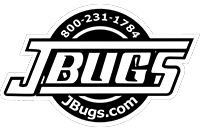




Your cart is currently empty.
Select Your Vehicle
Select Model
Select Detail
Select Year
Select Your Engine
Engine Type
Select Detail
{{ attribute.raw_prompt }}
You will receive an email when this product comes back in stock.
Notification Email
Cancel
Select Wishlist
New Wishlist Will Be CreatedCancel
Orders under $100 cost a flat-rate, $11.95*
*Contiguous United States only. Excludes Hawaii & Alaska.
For orders to Hawaii, Alaska, APO/FPO, Puerto Rico and other US territories, shipping cost will be calculated when possible. If our system cannot automatically calculate a shipping cost, we will call you to approve the shipping cost before your order ships.
International ShippingWe do not ship internationally. We only ship to the USA and it's territories.
You can return most unused, never installed, like-new items for 90 days from the date of receipt. Items must be in like-new condition.
The following items are final sale:
Copyright © JBugs.
All rights reserved. All images protected by US and International copyright laws. No part of this website may be reproduced, distributed, or transmitted in any form or by any means.
All Prices subject to change without notice or obligation. Not responsible for typographical or photo errors. "Volkswagen", "VW","Beetle", "Super Beetle", "Bus", "Ghia", "Type 2", "Type 3", "Thing", "Rabbit", "Cabriolet", "Jetta", and "Golf" are trademarked by Volkswagen of America and are used for descriptive purposes only.
